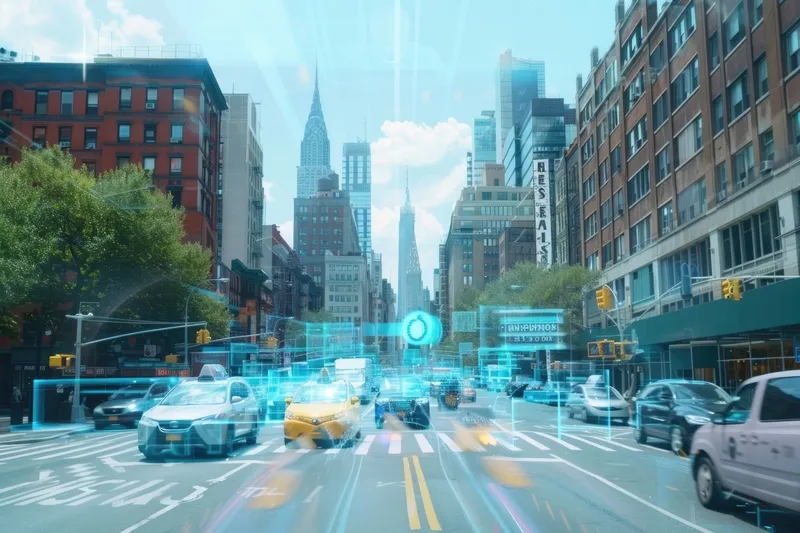Prospects for a vision of vehicles fully connected to traffic information, safety and entertainment services are being boosted by a $100 million investment from Intel. Pete Goldin reports. Hear the name Intel and what comes to mind is processing power. What may not be realised is that Intel is positioned to become a major player in the automotive technologies market, including connected vehicle technology. To strengthen this position, the company’s investment arm, Intel Capital, has established a $100 milli
November 30, 2012
Read time: 6 mins
Prospects for a vision of vehicles fully connected to traffic information, safety and entertainment services are being boosted by a $100 million investment from Intel. Pete Goldin reports.
Hear the nameThe Intel Capital Connected Car Fund will be invested globally over the next five years in hardware, software and services companies developing technologies to promote new, compelling in-vehicle applications and enable seamless connection between vehicles, infrastructure, mobile devices and even the internet.
“Technology has become an integral component of everyday life, with consumers demanding uninterrupted access to the internet and constant flow of information, news, entertainment and social media,” says Intel executive vice president, and president of Intel Capital, Arvind Sodhani. “Automobiles must be able to provide these same consistent and engaging computing experiences, and in a safe manner. The Intel Capital Connected Car Fund will drive the development of technologies to enhance the in-vehicle experience of the future.”
A vision of the future
Intel foresees highly integrated intelligent transportation systems that communicate with vehicles and transportation infrastructure, making travel safer, greener and more convenient – and the new fund is intended to make it happen.This concept goes beyond the connected vehicle prototypes currently being tested by the auto industry in collaboration with USDOT’s Research & Innovative Technology Administration (RITA). For example, Intel predicts cars will capture information about vehicle speed, steering and braking along with video footage from inside and outside the vehicle. Camera systems will be able to recognize street signs and alert the driver to changing conditions.
Intel’s vision for connected vehicles also goes beyond RITA’s current focus on vehicle-to-vehicle and vehicle-to-infrastructure communication. Intel envisions a car that can actually integrate with mobile devices and connect to the internet, providing all the same digital services consumers enjoy at home today.
“The car is the ultimate mobile device,” says Staci Palmer, general manager of Intel’s Automotive Solutions Division. “By 2014, automobiles will be among the top three fastest-growing areas for connected devices and internet content.”
Ton Steenman is vice president of the Intelligent Systems Group at Intel, and a recent appointee to USDOT’s ITS Program Advisory Committee. He says: “People will bring mobile devices into their vehicles regardless, so the automotive industry has a great opportunity to integrate these consumer devices more comprehensively and seamlessly into vehicles, and provide that information in a non-distracting manner so that they can be used safely.”
Next-generation ‘in-vehicle infotainment’ (IVI) systems will be able to push e-mails from a smartphone to a vehicle’s multimedia screen and read them aloud to the driver; offer voice-controlled instant messaging or social networking; and transfer video content from the home TV to the car for passenger entertainment.
Ultimately, Intel sees a connected car that will have intelligence and context awareness to offer the right information, at the right time and in the right way to keep drivers and passengers informed, entertained and productive while maintaining optimal safety.
Making the dream a reality
This vision is not without challenges, and overcoming these challenges is one of the main objectives of Intel’s new fund.“If you think about the number of sensors, from pressure sensors all the way up to cameras, that will exist in the vehicle in the coming decades, there is going to be an enormous amount of data,” Steenman predicts. “Cloud applications are aggregating data from many vehicles on the road, and that data will be relayed back to the vehicle. That is a whole other set of data that needs to be effectively and efficiently communicated to the driver.
“The challenge is this: how can data be made available to the driver in a non-distracting manner, and filtered so that drivers are only shown data that is relevant to the environment they are in at that moment? A lot of anthropology-type research needs to happen to make sure that information is displayed in a compelling yet safe manner.”
Intel employs a number of anthropologists to conduct research for the automotive market. They are working with the OEMs to determine how consumers respond to data, and what the next-generation interface should look like.
“We have a lot of experience in the company around anthropology and consumer research for consumer devices, PCs and smart TVs,” Steenman adds. “We are now applying all of that capability to the automotive industry.”
Integration of cameras in the connected vehicle is also a challenge, because cameras and the processing of images require a significant amount of computing performance – but as Intel’s core competency, developing the necessary processing power is a challenge the company is well place to take on.
High performance platforms
“One of the elements driving Intel is the performance requirements of vehicle electronics,” Steenman says. “We have seen that the OEMs are looking for high-performance platforms to process all this data as they evolve the connected vehicle. We will have much richer interfaces with the driver, which means we need richer graphics and more processing power for features such as gesture recognition and eye tracking.”The automotive industry is also seeking to simplify the software development model, reduce software complexity on the vehicle, and consolidate dispersed systems into a single platform, more akin to a PC. “Another part of our focus is bridging the gap between the rapid evolution of consumer devices and the fact that people keep their cars for much longer periods of time,” Steenman explains. “We need to build an open platform in the industry that can keep up with the expectations of consumers.”
The idea behind this type of standardisation has been grasped by GENIVI, a non-profit industry alliance supported by Intel, that is standardising the vehicle infotainment platform so it can be upgraded over the life of the vehicle. Steenman says the goal is to perform these upgrades via wireless networks, so consumers do not have to bring the vehicle into the dealership for every upgrade.
Such an easily upgraded platform will not only be a convenience to consumers, but also enable shorter development cycles, faster time to market, and reduced costs for companies developing software for connected vehicles. “That is the type of work we have been doing with the automotive industry, to bring that to market in the next couple of years,” Steenman says.
To help realise Intel’s vision, areas of investment for the Capital Connected Car Fund will include technologies that advance the next generation of in-vehicle infotainment, advanced driver assistance systems and seamless mobile connectivity. This includes new in-vehicle applications and development tools, and multimodal capabilities such as speech recognition, gesture recognition and eye tracking optimised for the connected car.
“Intel’s $100 million fund is focused on companies that are bringing innovative applications and services in connected vehicle models to the automotive industry,” says Steenman. “Bringing all these new technologies into connected vehicles can bring significant benefits to society in the form of efficiency, productivity and safety,” Steenman concludes, “particularly if we truly integrate them into a vision of holistic intelligent transportation systems.”










